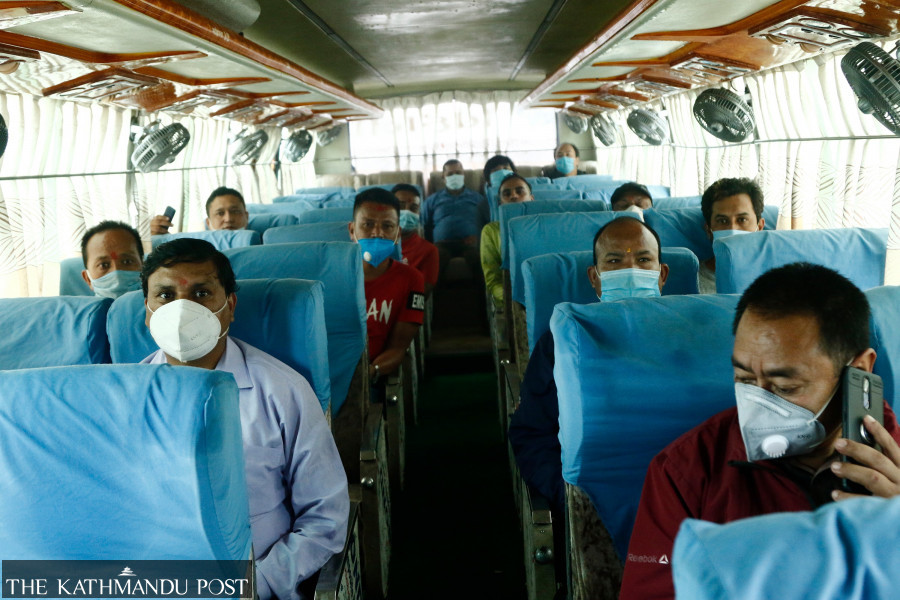Valley
Valley authorities decide to let public vehicles operate from Tuesday
Vehicles with capacity of more than 25 seats can provide services from 6am to 7pm following odd-even rules.
Post Report
Prohibitory orders that have been in place in three districts of Kathmandu Valley since April 29 have been extended by a week starting Tuesday, but with further relaxation allowing public vehicles to ply on the basis of odd-even rules.
The decision was made after chief district officers of Kathmandu, Lalitpur and Bhaktapur held a meeting on Monday. The joint meeting has announced plans to operate public buses having more than 25 seats from Tuesday onwards.
“Our Monday’s meeting has decided to allow public vehicles with more than 25 seats to operate,” said Dhundi Prasad Niraula, the chief district officer of Lalitpur.
A notice published by the District Administration Office, Kathmandu on its website states that those public vehicles which will be allowed to operate under the odd- even rules will be allowed to operate between 6am and 7pm.
Public vehicles, however, will not be allowed to carry passengers beyond its seat capacity. The authorities have asked bus operators to ensure that drivers and their helpers as well passengers compulsorily wear masks.
The decision to allow public vehicles to operate follows the three district administrators’ last week’s move of letting private vehicles run under the odd-even rule and business to operate on alternate days.
After the second wave of the coronavirus hit the country, Kathmandu Valley authorities had imposed strict prohibitory orders from April 29.
Over the past weeks, the authorities have been gradually easing the lockdown as the number of cases has started to decline. But experts say the threat is not over yet, and a third wave could strike the country very soon.
As of Sunday, the nationwide Covid-19 infection tally stood at 633,679. Covid-19 has so far claimed 9,009 lives across the country.
Experts have attributed the decline in new daily infections to the prohibitory orders that have been in place and have warned of a surge in cases if people’s mobility increases and safety protocols are not strictly followed. While the cases have declined in Kathmandu Valley, the virus has also penetrated the communities and reached rural areas, which is also a major concern, according to doctors.
Experts’ concerns also stem from the fact that Nepal has not been able to resume its vaccination drive against Covid-19 for a lack of vaccines.
Nepal so far has vaccinated 8.3 percent of its 30 million population, but only 2.4 percent of the population has received both doses.




 6.84°C Kathmandu
6.84°C Kathmandu









